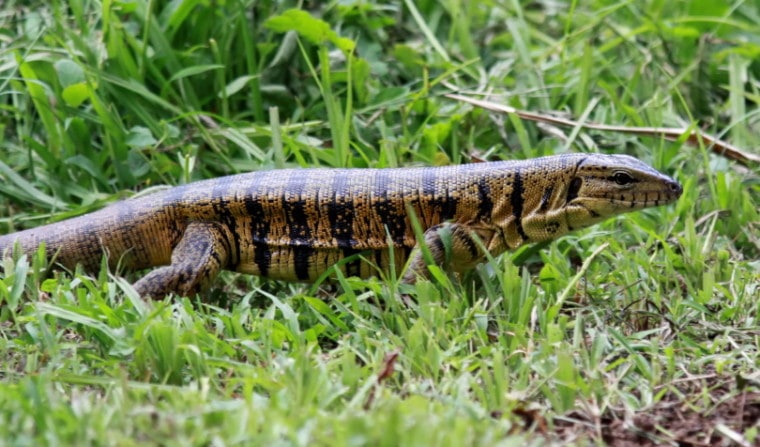
Any reptile fanatic will tell you that a lizard can be just as cute and fun to interact with as a typical dog or cat. Maybe you are one of these people and are considering adding a Tegu to your family. The word “tegu” comes from an Amazonian word meaning “lizard.”
Gold Tegus are not common pets but they are quite interesting and intelligent. Read on to learn more about these unique lizards.

Quick Facts About the Gold Tegu
| Species Name | Tupinambis teguixin |
| Common Name | Gold Tegu, Tiger Lizard |
| Care Level | Advanced |
| Lifespan | 12–20 years |
| Adult Size | 32–43 inches |
| Diet | Omnivore |
| Minimum Tank Size | 4 ft. wide and 2 ft. long |
| Temperature & Humidity
|
Ambient temperature of 80°F, basking spot of 120°f–130°F, humidity of 80% |
Do Gold Tegus Make Good Pets?
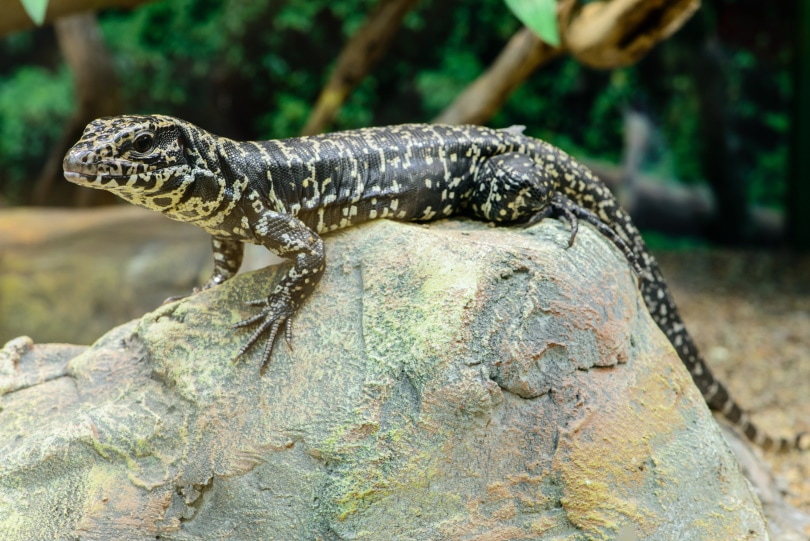
Gold Tegus are harder to domesticate than other types of Tegus. Due to this, it is recommended that only advanced herpetologists keep this type of lizard.
Appearance
Gold Tegus are large lizards, measuring from 34 to 43 inches long. They will weigh between 7 and 8 pounds. This Tegu has a glossy body with golden and black bands alternating on it. Their legs and tail are thick and strong.
How to Take Care of the Gold Tegu
Habitat, Tank Conditions & Setup
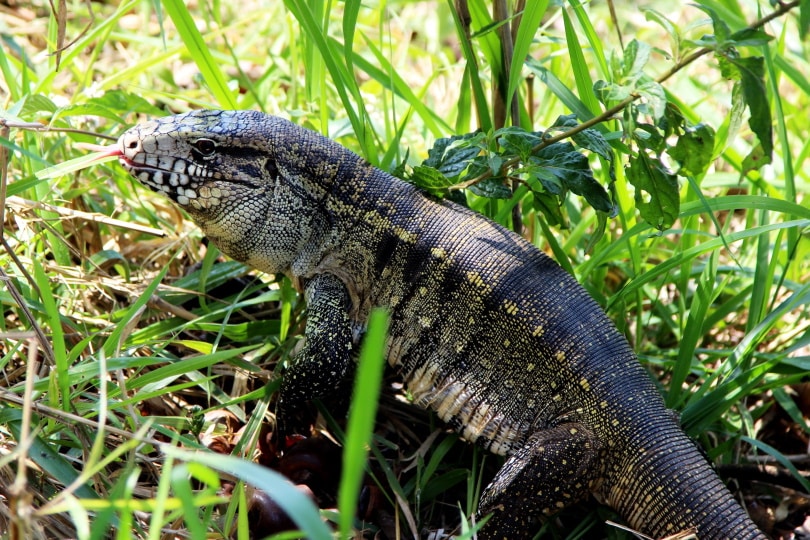
Tank
The minimum size of your Gold Tegu tank should be 4 feet wide by 2 feet long. If you have a bioactive substrate, you will only need to do spot cleaning of the tank from the defecation of the Tegu. If you have a regular substrate, it will need to be cleared out fully every 3–4 months. You should have a very shallow tub of water for your Tegu to bask in and drink from. This should be cleaned out daily or every other day.
Lighting
In order to help your Tegu get the appropriate amount of vitamin D, you should use a UV-B bulb to light their enclosure.
Heating (Temperature & Humidity)
The ambient temperature of the tank should be around 80°F, while their basking area should be around 120°F–130°F. The humidity should be kept around 80%. This can be achieved with a humidifier. You may need to enclose parts of the top of the tank with plastic wrap to keep the humidity this high. Never put plastic wrap near heat lamps, though.
Substrate

Tegus like to bury and dig in their substrate, so you should have a nice deep layer of substrate in their setup. A good substrate mix can be made with the following ingredients, which you can buy at a pet store or local hardware store: peat moss, topsoil, and coco bark. Mix in equal parts to provide the perfect substrate for your Tegu that has the added benefit of holding moisture well.
| Tank Recommendations | |
| Tank Type | 4’ W x 2’ L |
| Lighting | UV-B lamp |
| Heating | Ambient 80°F, sunning spot 120°F–130°F |
| Best Substrate | Mixture of peat moss, topsoil, and coco bark |
Feeding Your Gold Tegu
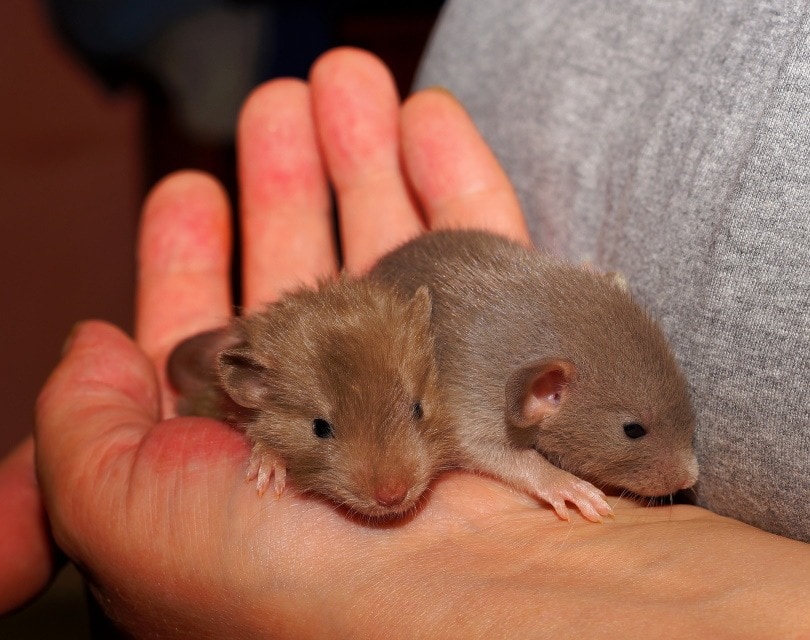
Gold Tegus are omnivores, meaning they eat both plants and animals. They prefer eating small animals and will catch them with their sharp teeth. They will eat mice and rats, as well as birds and eggs in the wild. They are also known to eat fruits when available.
| Diet Summary | |
| Fruits | 10% of diet |
| Insects | 0% of diet |
| Meat | 90% of diet: small/medium-sized rodents, eggs |
| Supplements Required | N/A |
Keeping Your Gold Tegu Healthy
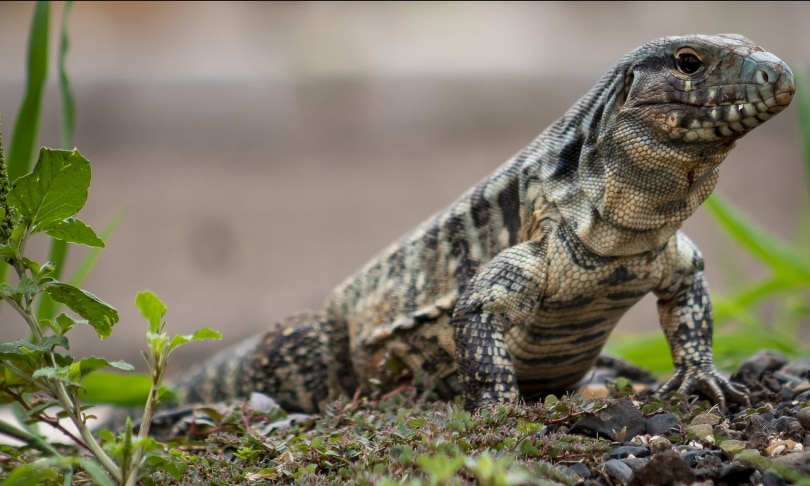
These unique lizards are not commonly kept as pets, so many health issues are not known about them. That said, here are common health issues that Tegus may suffer from:
- Related Read: Red Tegu Info & Care Guide for Beginners (With Pictures)
Lifespan
These large lizards will live anywhere from 12 to 20 years in captivity.
Breeding
Gold Tegus are almost never bred in captivity due to the difficulty of getting two Tegus to mate. In the wild, Gold Tegus will mate after they emerge from brumation. Once a female Tegu’s eggs have been fertilized, she will lay them in a nesting burrow. The babies will then hatch after 154–170 days.
Are Gold Tegus Friendly? Our Handling Advice
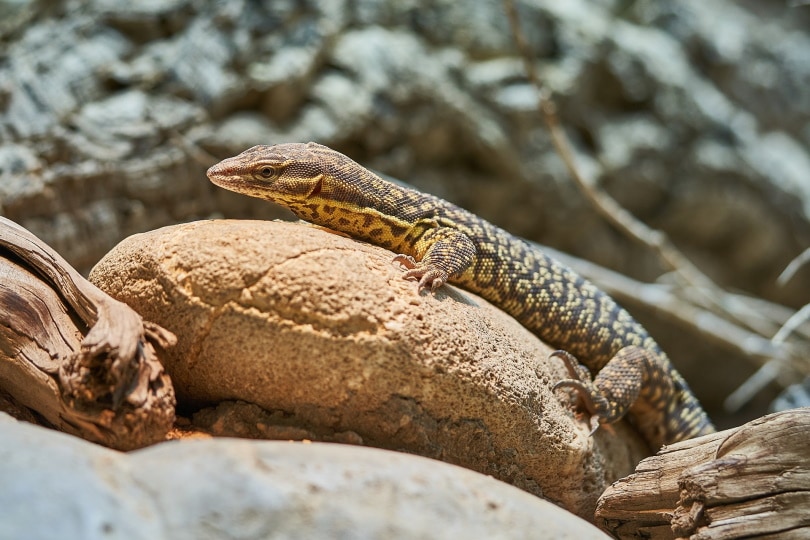
Golden Tegus are difficult to domesticate, so it is best to handle them with gloves. This will help shield you from any bites that the lizard may try to give you.
Shedding & Brumation: What to Expect
This lizard goes through brumation, which is a dormant period for lizards. During this time, the Tegu will not eat, defecate, drink, or move for several weeks. Tegus also do not shed in one piece like a snake; they will shed one part of their body at a time.
How Much Do Gold Tegus Cost?

A small Gold Tegu will run you from $60 to $80 online.
Care Guide Summary

Conclusion
Gold Tegus are interesting lizards that should only be kept by advanced herpetologists. They are beautiful to look at but hard to domesticate. If you are advanced in lizard care, taking care of the Gold Tegu can be a rewarding challenge.
Featured Image Credit: Henner Damke, Shutterstock







